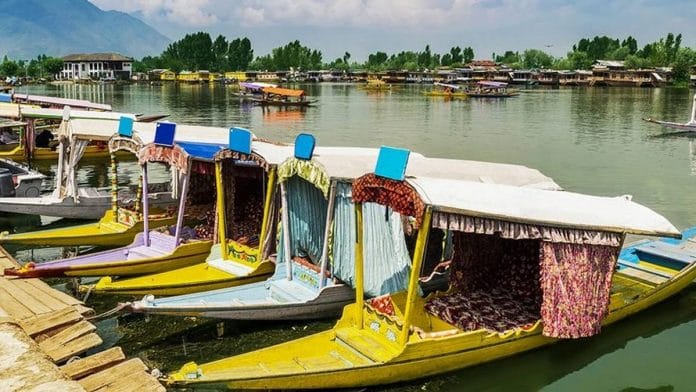Never before has the world come to a standstill like it has after Covid-19. Never before was travel and tourism so grounded as it is now. The United Nations World Tourism Organization reports that 100 per cent global destinations now have travel restrictions. From whatever little we know and what all we do not about the novel coronavirus, it is safe to say that this crisis is not going away any time soon.
Hence, the Narendra Modi government is engaged in a strategy to balance between saving lives now and ensuring that an economic collapse does not take more lives in the future.
Many economic activities badly hit by the lockdown will soon limp back to life. But one of the biggest industries of the world — travel and tourism, which has been growing faster than all other sectors, creating 10 per cent of the global employment and contributing almost 10 per cent to the global gross domestic product (GDP) — will be unable to take that risk for some more time. The major known weapon to fight Covid-19 — social distancing — is the antithesis of what makes travel and tourism. Concerns around health safety and a fear of a second wave of the coronavirus may dictate a cautious approach to putting travel and tourism on the rails.
Also read: Modi govt prepares to reopen hotels, Aarogya Setu and masks could be must for tourists
Ripple effect on tourism
The adverse impact is phenomenal. The United Nations World Tourism Organization (UNWTO) foresees a decline of 60 to 80 per cent in tourist arrivals. In 2019, tourism receipts had touched $1.5 trillion worldwide. In India, a recent report has put the possible compression of 70-75 per cent of business in the hotel and aviation sector alone. The UNWTO admits these are just early and tentative estimates. The full impact is difficult to ascertain because travel and tourism, directly or indirectly, comprises a large number of activities, and the ripple effect is deep and wide.
The informal sector predominates travel and tourism industry. Globally, as in India, about 80 per cent of the industry is composed of small and medium enterprises — not taking into account the huge number of craftsmen, artisans and artists employed in the cultural sector, and other service providers who depend on tourism for their day-to-day existence. They are vulnerable and each passing day of inactivity pushes them closer to the brink of collapse.
Also read: How Bali, a tourist hotspot, escaped becoming a virus hotspot
What needs to be done?
The Ministry of Tourism has set up a task force for the industry’s revival. The task force must do a few things urgently.
With the assistance of the travel and tourism industry, a quick assessment of the ground situation should be made. The task force must work out a plan of action for the industry as a whole. However, many of the steps that need to be taken lie outside the purview of the tourism ministry. So, the ministry should ensure that its plan is integrated with the broad national economic recovery initiatives being undertaken by the Modi government. The task force may have to go beyond ‘revival’.
First, it should address the question of survival of large segments of the industry. If the reopening takes time, which it most likely would, then it should look at the overall recovery.
The support needed, perhaps, will make a long list but at the top will be payroll support, credit guarantee, provision of liquidity, benefits of ‘industry’, rationalisation of GST, tax reviews and easing of regulations inhibiting transport and tourism.
Steps for revival of pre-Covid-19 activities and going beyond that for a new future should become the agenda. This will involve incentives, promotions, innovations and other steps for inducing demand.
Also read: International tourism could decline by 60-80% in 2020 due to Covid-19: UN report
Addressing the allied sector concerns
Such recovery is intricately linked to restructuring the aviation sector. In aviation, just like in tourism, innovation and use of IT for increasing efficiency and productivity, and reducing cost should become the game-changing initiatives. Falling aviation fuel prices is a welcome development. The sector will keenly look forward to some cheerful news on ground handling costs from the government.
Even in the best of times, the industry had a long wish list. This list will only become lengthier and urgent now. The Modi government has this huge problem of balancing between its falling revenue and the need for increasing expenditure.
It will be pragmatic to stagger the tourism revival plan in a time frame — immediate for survival, short-term for recovery, and long-term for a new journey. And the national economic recovery plan, which will likely require government investments in infrastructure to provide income to the poor, should include development of domestic tourism destinations — the segment that is likely to lead India’s tourism resurgence.
Such is the urgency of reviving tourism for the economic health of India that the words of Albert Camus should be a good reminder: “I’ll tell you a big secret my friend. Don’t wait for the Day of Judgment. It takes place every day.”
M.P.Bezbaruah is former secretary, Ministry of Tourism, and Permanent Representative (Hon.) UNWTO. Views are personal.






